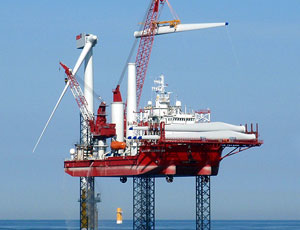Fluor Corp.’s built many complex structures but its first offshore wind farm project isn’t going well.

The Irving, Texas-based contractor will report quarterly earnings Nov. 4 and will take a $163-million write-off in its third-quarter earnings because of unexpected complications in building the 504-MW Greater Gabbard wind farm off the coast of England.
The loss on the $1.8-billion, fixed-price contract with Scottish and Southern Energy plc means that the project will be unprofitable, says Avram Fisher, an analyst who follows Fluor for BMO Capital Markets.
Fluor blames problems with weather, material and equipment delivery as well as additional costs for marine vessels and some subcontractors.
Other offshore wind farm projects have run into trouble, too.
“One of the factors wouldn’t have been an issue [and] two could have been managed,” but the number of problems that occurred had a geometric effect on the project costs, says Keith Stephens, a spokesman.
Fluor has installed all 140 of the monopiles for the project, located 25 km off the coast of Suffolk in water between 24 and 35 meters deep. The company has also installed 53 of 140 wind turbine generators. The majority of the construction has to occur in open water on specialized vessels.
Construction will slow down during the winter season, but installation and commissioning of the remaining wind turbine generators, subsea inter-array cabling and grid substations are set to continue through the latter part of 2011. The overall project is expected to be completed in early 2012.
It remains to be seen whether Fluor’s problems with the wind farm are indicative of overall difficulties in building offshore wind farms, still a young industry worldwide, but one that is moving forward with momentum in the U.S.
“If Fluor is having a problem, who the heck is going to build these?” says Fisher. “These are complicated projects, more complicated” than building oil platforms, he adds. “It will be expensive until the industry figures out a cookie-cutter approach to building offshore wind projects.”
Fluor is involved in the development stage for two other offshore wind farms in the U.K. Stephens says that he expects the future of Fluor’s involvement in offshore wind farms to be discussed during the third-quarter earnings conference call.

Post a comment to this article
Report Abusive Comment